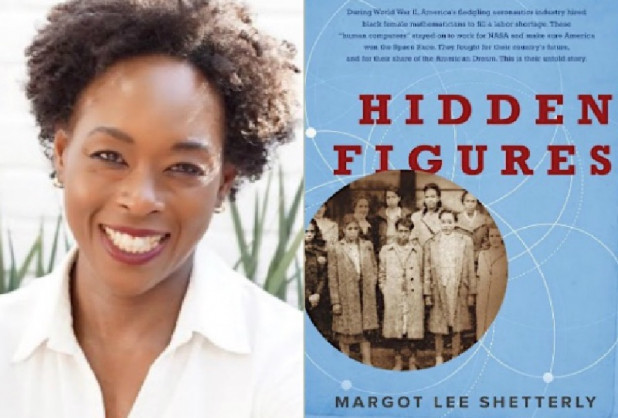Type “scientist” into Google and what images do you find? As author Margot Lee Shetterly would describe it, the results are pretty pale. They are “mostly male. Usually white.”
But the Virginia writer knew this convention to be false. She grew up surrounded by blacks in STEM. Her father spent 40 years working in NASA’s Langley Research Center in Hampton, Virginia. Her aunts and uncles overwhelmingly made their way into engineering and technology. To Shetterly, “the face of science was brown like mine.”
It makes sense, then, that her first book, “Hidden Figures,” was sparked by a visit home, when her father casually mentioned that her former Sunday school teacher, Kathleen Land, worked for NASA as a mathematician. Shetterly, 47, followed that thread and spent the next several years researching these little-known “human computers,” women who, for decades, were tucked away in footnotes, their contributions to flight and space exploration gathering dust.
“Hidden Figures” brings four particular women out of the shadows — Dorothy Vaughan, Katherine Johnson, Mary Jackson, and Christine Darden.
Through careful interviews and painstaking research, Shetterly tells their stories. The book begins in 1943, with the country in the throes of World War II. A labor shortage and concurrent pressure from civil rights leader A. Phillip Randolph forced the government to put out the call to women of all races to work as mathematicians at the National Advisory Committee for Aeronautics — the predecessor to NASA.
As each woman — Vaughan, Johnson, Jackson and Darden — joined these ranks, she was shown to racially separate facilities and lunchrooms. Shetterly asks readers to imagine “the chutzpah it took for an African-American woman in a segregated southern workplace to tell her bosses she was sure her calculations would put a man on the moon.”
But these women pushed back in ways both significant and measured. One colleague, Miriam Mann, would swipe the “colored computers” sign off their designated lunchroom table every day, daring supervisors to put it back. Jackson found herself telling her boss’ boss that his numbers were incorrect, only to have him come to apologize after he realized she was right.

Incidents of resistance also show up in the movie adaptation of the book, starring Taraji P. Henson as Katherine Johnson, Octavia Spencer as Dorothy Vaughan and Janelle Monae as Mary Jackson. (Darden, who didn’t join NASA until 1967, doesn’t appear in the film.)
All three deliver solid performances, making the viewer comfortable in a world where equations run off the tongue as easily as a recipe in more conventional fare. While Henson’s character receives most of the screen time, it is Monae’s character that elevates the film above a one-note exercise. Jackson’s story — fighting to become the first African American aeronautical engineer at NASA — is worthy of a film of its own.
Both the movie and book make us wonder: How much promise and potential was lost in the teeth of Jim Crow? How much help did Jim Crow give the Russian’s space program?
Shetterly may have an answer in her next book. She’s working to uncover more “Hidden Figures.” It’ll be fascinating to see who she brings into the light.


